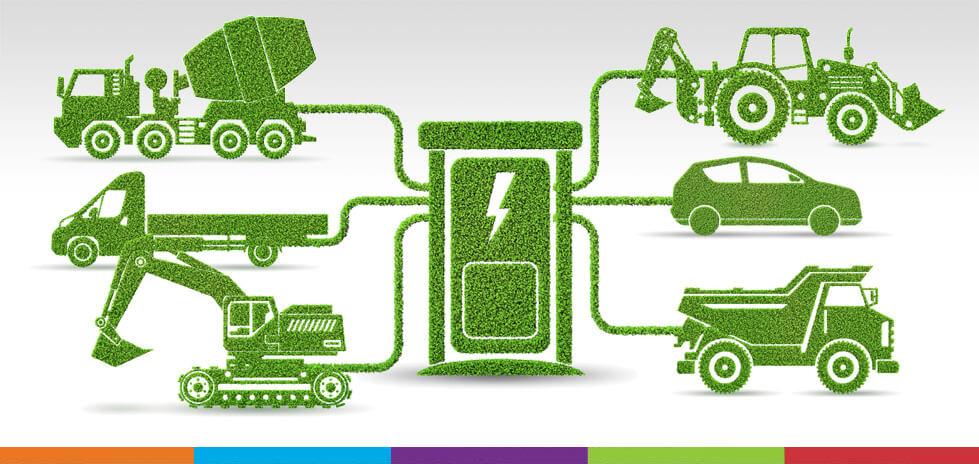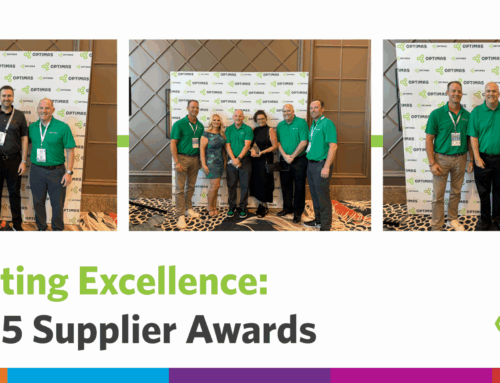
3 Opportunità di produzione sostenibile per gli OEM
Cosa significa l'obiettivo zero emissioni del Regno Unito per il settore edile?
Nel novembre 2020, il Primo Ministro ha annunciato il “Piano in dieci punti per una rivoluzione industriale verde” del governo. Questo piano delinea le politiche e le azioni to reach a UK net-zero emissions target by 2050.
Cosa significa questo per gli OEM del settore edile? Mentre emissioni globali di CO2 sono diminuiti di 10% dalle fonti di costruzione durante la pandemia, stanno riprendendo ora che l’economia è di nuovo in fermento.
Finding ways to carry out sustainable manufacturing — including sourcing elementi di fissaggio di produzione locale, scegliendo metodi di produzione rispettosi dell'ambiente e utilizzando imballaggi riutilizzabili per la spedizione, entreranno nella lista delle priorità per gli OEM e diventeranno un fattore di differenziazione.
What Does the UK’s Net-Zero Emissions Target Mean for OEMs?
Dalla pubblicazione del rapporto 2020, che descrive la necessità per tutti gli attori lungo la catena del valore di aumentare i propri sforzi di decarbonizzazione, il governo si aspetta di più dalle imprese. Nell'ottobre 2021, ha debuttato un nuovo rapporto e ha dettagliato le politiche necessarie per raggiungere lo zero netto entro il 2050. Le implicazioni per gli OEM includono:
- Aspettative più grandi: Sia le aspettative del governo che le opinioni dei consumatori stanno stimolando la ricerca e lo sviluppo del settore. Cinquantasei per cento dei residenti nel Regno Unito say they support total decarbonisation. OEMs are turning their attention to finding ways to design zero-emission construction equipment, increase supply chain transparency, and implement policies that will edge them towards their net-zero emissions target.
- Cambiamenti generali in materia di sostenibilità: Sustainable manufacturing will impact OEMs across all parts of their supply chains and production lines. Manufacturers must show their commitment to making sustainable construction equipment a reality through progetto, selezione del prodotto e processi di costruzione.
- Cambiamenti nel modello di business: Per servire meglio la politica governativa e la capacità di realizzare progetti sostenibili, gli OEM dovranno modificare i loro modelli di business. Secondo un rapporto, raggiungendo emissioni nette pari a zero richiederà un nuovo approccio che comprenda il ripensamento del modo in cui misuriamo il valore.
Si tratta di un lavoro complesso, tuttavia, e con normative e obiettivi in continua evoluzione, gli OEM devono trovare partner in grado di identificare le lacune nei loro processi.
Sustainable Manufacturing Opportunities OEMs Should Consider
La prima sfida per coloro che operano nel settore edile e desiderano apportare cambiamenti sostenibili è identificare le opportunità. Possiamo aiutarti con quello. Ecco tre modi in cui gli OEM possono iniziare a lavorare per raggiungere i loro obiettivi di zero emissioni nette:
1. Trasporti a basse emissioni di carbonio
The electrification of construction vehicles will represent a big wave of sustainable manufacturing in the construction industry. There will likely be financial incentives and tax reductions for people working on this effort, too, because of the impact vehicles have on the carbon footprint of the whole industry.
There are challenges to low-carbon transportation in construction, though. Heavy mobile machinery is unlikely to move from diesel in the near future, and electric vehicles need a lot of supporting equipment that must be developed, designed, and made affordable. Construction vehicle manufacturers who are up for the challenge have a lot to win.
2. Nuove partnership produttive
Sustainable manufacturing is the construction industry’s future, but knowing how to initiate this transformation is a huge challenge. While companies feel the pressure to renovate their processes and supply chains, they need knowledgeable partners who can help bring issues into focus and streamline operations.
Manufacturing partners have expertise and can shed light on changing legislation to help companies innovate while staying within regulations and making good renewable choices. The cost of realizzare una catena di fornitura sostenibile può anche intimidire e un partner aiuterà a risolverlo.
3. Analisi delle parti
I veicoli da costruzione ne comprendono molti parti e elementi di fissaggio, and the manufacture of these tiny but vital parts could be a significant opportunity to reduce emissions in the OEM process. Engineering fasteners for electrification production will require in-depth analysis of materials, durability, weight, and charge. If we can evolve our fasteners to be more versatile, smaller, and lighter, we’ll have a much better chance of developing whole construction vehicles that use renewable energies.
The government and the public pressure will inspire all industries to head boldly toward net-zero emissions by 2050. The reality of this effort is challenging, but if OEMs can tap into the areas of opportunity that exist in the construction industry, they can find their own way to sustainable manufacturing practices.






